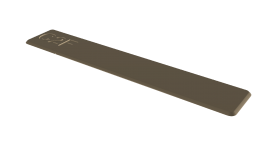DanL50
Newbie
New here and looking for some advice please.
I have a 1960's Pollina, (Ser.# 1524), 41/120, 4/2, 15.3" (39cm) keyboard.
It seems in excellent shape, bellows and keys all good, but the lower strap bracket is broken.
It is a U shape with two posts through the body. One post has broken off.
How do I best access the inside to free the remaining post and install a new bracket, or is this more complex than it seems?
A second question is whether to keep this instrument or get another. I last used it as a 10-12 year old in the early 1960's.
Now with time on my hands at over 70 years, I thought I'd give lessons and playing a try again. The instrument is small - a lady/kid version, I think? - but I'm short and have small fingers and the fit and key size seem fine. Not thinking about selling at all, but is it worth the repair cost for the bracket?
Thank you.
I have a 1960's Pollina, (Ser.# 1524), 41/120, 4/2, 15.3" (39cm) keyboard.
It seems in excellent shape, bellows and keys all good, but the lower strap bracket is broken.
It is a U shape with two posts through the body. One post has broken off.
How do I best access the inside to free the remaining post and install a new bracket, or is this more complex than it seems?
A second question is whether to keep this instrument or get another. I last used it as a 10-12 year old in the early 1960's.
Now with time on my hands at over 70 years, I thought I'd give lessons and playing a try again. The instrument is small - a lady/kid version, I think? - but I'm short and have small fingers and the fit and key size seem fine. Not thinking about selling at all, but is it worth the repair cost for the bracket?
Thank you.

